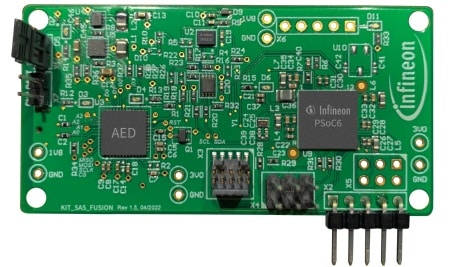Infineon Technologies has released a battery-powered Smart Alarm System (SAS). The tech platform is the industry’s first battery-powered AI/ML-based acoustic event detection system with sensor fusion. The solution incorporates Infineon’s analog XENSIV MEMS microphone IM73A135V01, XENSIV digital pressure sensor DPS310 and PSoC 62 microcontroller. It features a low-power wake-on acoustic event detector that improves the battery life of the device. The compact design provides a high level of accuracy in detection and better battery life compared to that of acoustic-only alarm systems which are commonly used in smart buildings and homes, and other IoT applications.

“We are excited to enable a unique and differentiated approach to bring AI/ML capabilities to cost-sensitive, battery-powered home security sensor systems, without sacrificing battery life,” said Laurent Remont, Vice President of IoT and Sensor Solutions at Infineon’s Power & Sensor Systems Division. “Current home security solutions are unreliable for detecting events such as glass break. Our new solution combines a number of best-in-class technologies to create an alarm system that is smart, reliable and power efficient. We look forward to bringing more innovative solutions into the home security market.”
According to the company, the technology platform achieves high accuracy and very low-power operation using sensor fusion based on artificial intelligence/machine learning (AI/ML). The solution incorporates Infineon’s high signal-to-noise ratio (SNR) analog XENSIV MEMS microphone IM73A135V01, XENSIV digital pressure sensor DPS310 and PSoC 62 microcontroller. Higher accuracy is achieved by utilising Infineon’s in-house sensor fusion software algorithm which is based on precisely trained AI/ML that combines acoustic and pressure sensor data to accurately differentiate between different types of sounds such as sharp sounds inside a home and distinctive audio/pressure event. These events can be created when glass is broken, a house alarm is triggered due to a smoke alarm, a carbon monoxide alarm or an intrusion is detected through a door or window. The AI/ML sensor fusion algorithm is also capable of eliminating many other background sounds or background pressure events that can generate false positives due to the similarities to alarm systems.







Looks very expensive!